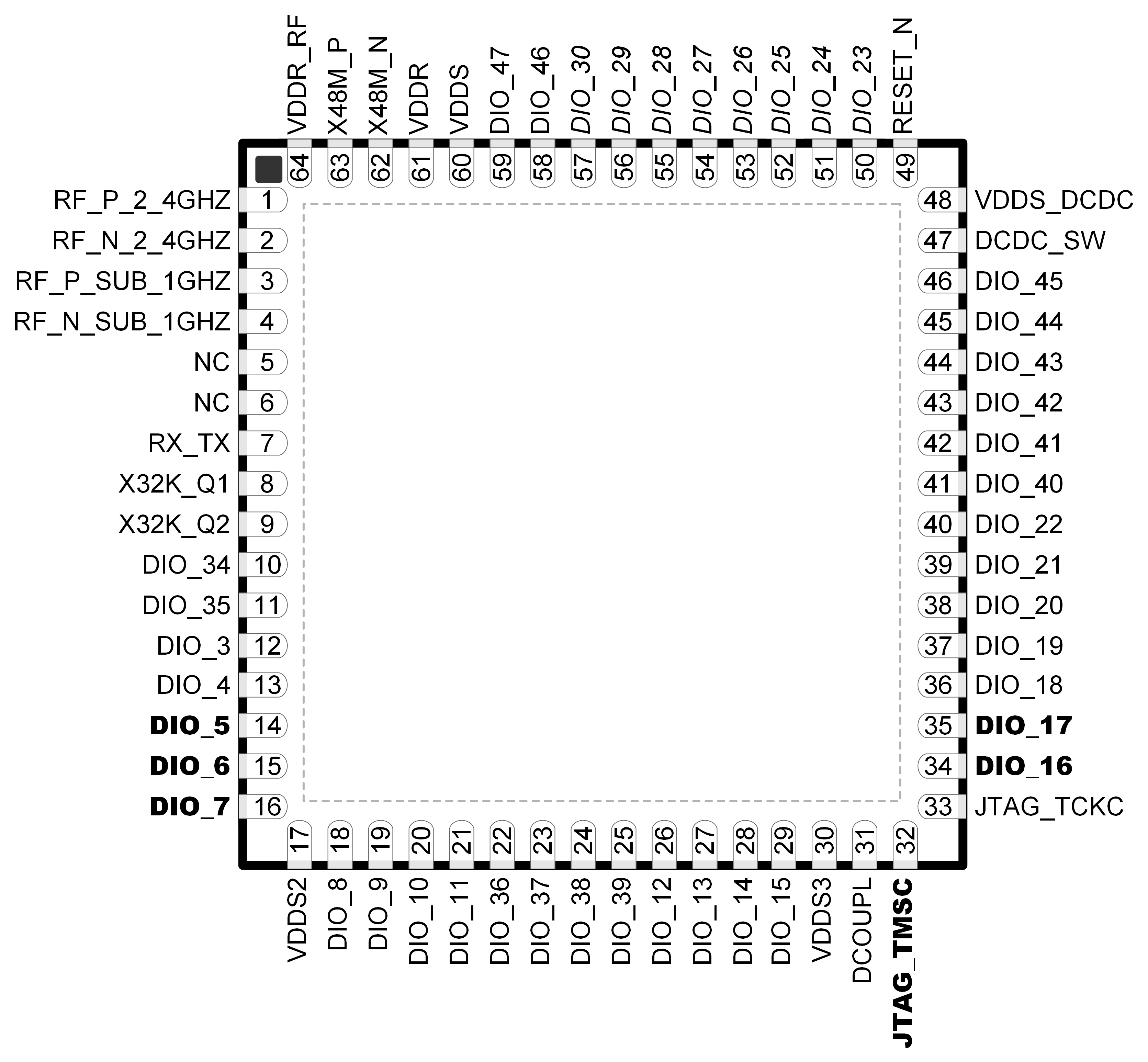SWRS266B December 2022 – April 2024 CC1354R10
PRODUCTION DATA
- 1
- 1 Features
- 2 Applications
- 3 Description
- 4 Functional Block Diagram
- 5 Device Comparison
- 6 Pin Configuration and Functions
-
7 Specifications
- 7.1 Absolute Maximum Ratings
- 7.2 ESD Ratings
- 7.3 Recommended Operating Conditions
- 7.4 Power Supply and Modules
- 7.5 Power Consumption—Power Modes
- 7.6 Power Consumption—Radio Modes
- 7.7 Nonvolatile (Flash) Memory Characteristics
- 7.8 Thermal Resistance Characteristics
- 7.9 RF Frequency Bands
- 7.10 861MHz to 1054MHz—Receive (RX)
- 7.11 861MHz to 1054MHz—Transmit (TX)
- 7.12 861MHz to 1054MHz - PLL Phase Noise Wideband Mode
- 7.13 861MHz to 1054MHz - PLL Phase Noise Narrowband Mode
- 7.14 Bluetooth Low Energy—Receive (RX)
- 7.15 Bluetooth Low Energy—Transmit (TX)
- 7.16 Zigbee and Thread - IEEE 802.15.4-2006 2.4GHz (OQPSK DSSS1:8, 250kbps) - RX
- 7.17 Zigbee and Thread - IEEE 802.15.4-2006 2.4GHz (OQPSK DSSS1:8, 250kbps) - TX
- 7.18 Timing and Switching Characteristics
- 7.19 Peripheral Characteristics
- 7.20 Typical Characteristics
- 8 Detailed Description
- 9 Application, Implementation, and Layout
- 10Device and Documentation Support
- 11Revision History
- 12Mechanical, Packaging, and Orderable Information
Package Options
Mechanical Data (Package|Pins)
Thermal pad, mechanical data (Package|Pins)
Orderable Information
6.4 Pin Diagram—RSK Package (Top View)
 Figure 6-2 RSK
(8mm
×
8mm)
Pinout,
0.4mm
Pitch (Top View)
Figure 6-2 RSK
(8mm
×
8mm)
Pinout,
0.4mm
Pitch (Top View)The following I/O pins marked in Figure 6-2 in bold have high-drive capabilities:
- Pin 14, DIO_5
- Pin 15, DIO_6
- Pin 16, DIO_7
- Pin 32, JTAG_TMSC
- Pin 34, DIO_16
- Pin 35, DIO_17
The following I/O pins marked in Figure 6-2 in italics have analog capabilities:
- Pin 50, DIO_23
- Pin 51, DIO_24
- Pin 52, DIO_25
- Pin 53, DIO_26
- Pin 54, DIO_27
- Pin 55, DIO_28
- Pin 56, DIO_29
- Pin 57, DIO_30